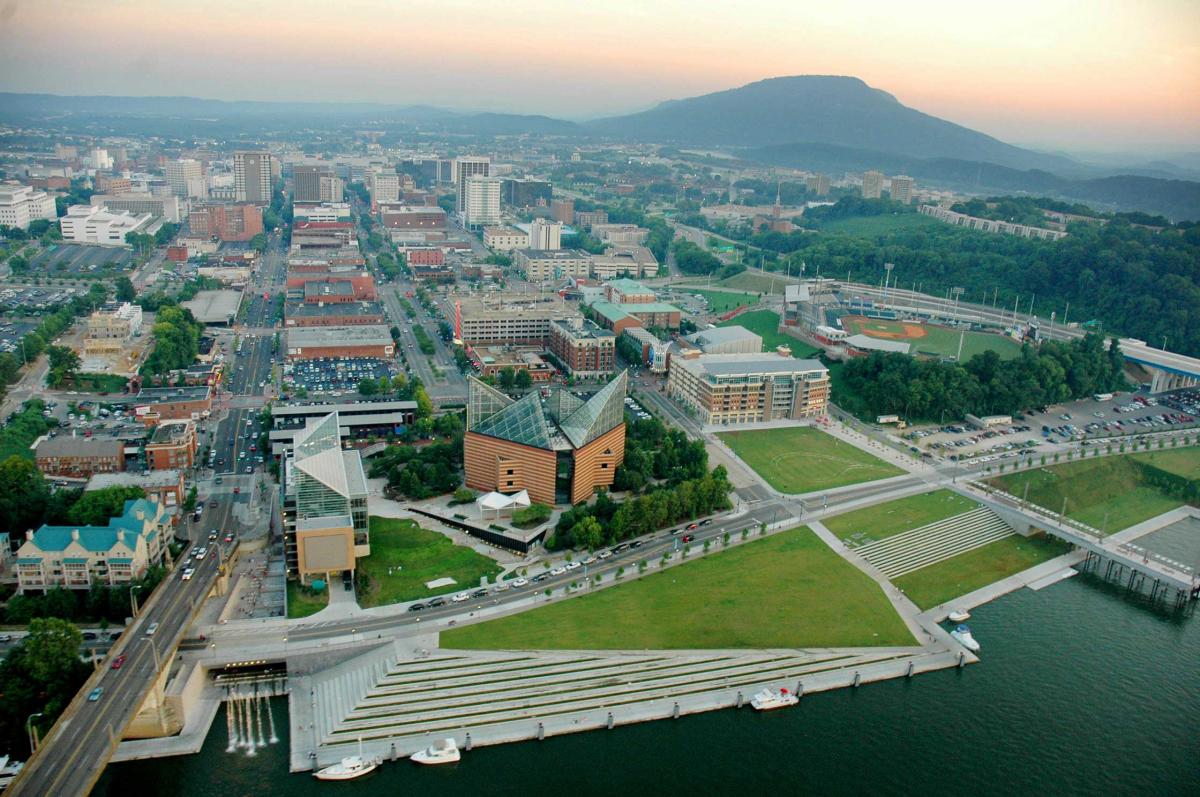- Who We Are
- What We Do
- Our Issues
- Our Projects
- Sprawl Retrofit
- Highways to Boulevards
- CNU/ITE Manual
- Health Districts
- The Project for Code Reform
- Lean Urbanism
- LEED for Neighborhood Development
- Missing Middle Housing
- Small-Scale Developers & Builders
- Emergency Response
- HUD HOPE VI
- Rainwater in Context
- Street Networks
- HUD Finance Reform
- Affordable Neighborhoods
- Autonomous Vehicles
- Legacy Projects
- Build Great Places
- Education & Trainings
- Charter Awards
- Annual Congress
- Athena Medals
- Resources
- Get Involved
- Donate
- Membership
- Public Square
The Riverfront Parkway in Chattanooga, Tennessee, once conceived as a waterfront freight route quickly became a physical barrier to the city’s riverfront. In the 1960s, Chattanooga built a four lane, limited-access, at-grade highway along the city’s riverfront. The highway was built to efficiently move industrial truck traffic throughout the region. At peak operation, the Riverfront Parkway carried approximately 20,000 vehicles per day, most of which exited at one of only two downtown access points. Limited access points contributed to heavy traffic delays and a degradation of the downtown character. Also, the highway did not allow residents easy access to the riverfront and, consequently, slowed economic growth.
Highway Removal
In the late 1960s, Chattanooga’s manufacturing market declined and much of the industry along the river was shut down. The design of Riverfront Parkway became obsolete; even its intended users were no longer present. As a result, traffic volume decreased and its value was no longer worth the maintenance. By the 1980s public discussion focused on how to best utilize the valuable space that the highway claimed. For decades opponents and proponents debated the value and use of the space, and the potential transportation consequences following highway removal. In the early 2000s, a plan was finally accepted to replace the four-lane, obsolete highway with a more pedestrian-friendly and easily accessible boulevard.
Before

The Boulevard
Within the footprint of the previous highway, Riverfront Parkway was converted to a boulevard in 2004. The boulevard allowed pedestrians easy access to riverfront amenities, and provided greater connectivity to downtown Chattanooga via four new access points. The at-grade access points introduced four new intersections that evened the distribution of trips along downtown streets, alleviating congestion in bottle-neck areas. In addition to reducing the number of lanes from four to two, the converted boulevard contained a variety of aesthetic and pedestrian improvements. Attractive sidewalks, gutters, plants, and trees as well as pedestrian crossings were installed to make the boulevard both an aesthetically pleasing and safe transportation route.
Economic Development
A variety of positive economic benefits have come from the replacement of the old highway with an attractive boulevard. The visual and economic aura of the downtown area has been revitalized, and population has consistently grown in recent years, by 30% since 1990. The boulevard conversion attracted millions of dollars of investment in the area, as the riverfront is becoming one of the city’s premier addresses. A new park has been created on the riverfront that complements the design of the boulevard. And, a variety of new developments have been constructed, all concentrated around the boulevard. The residents and businesses are now connected to the riverfront, allowing for improved recreational access and increased business opportunities. Replacing the old highway barrier with an integrated and pedestrian-oriented boulevard helped to create the vibrant and socioeconomically stable downtown Chattanooga of today.



















